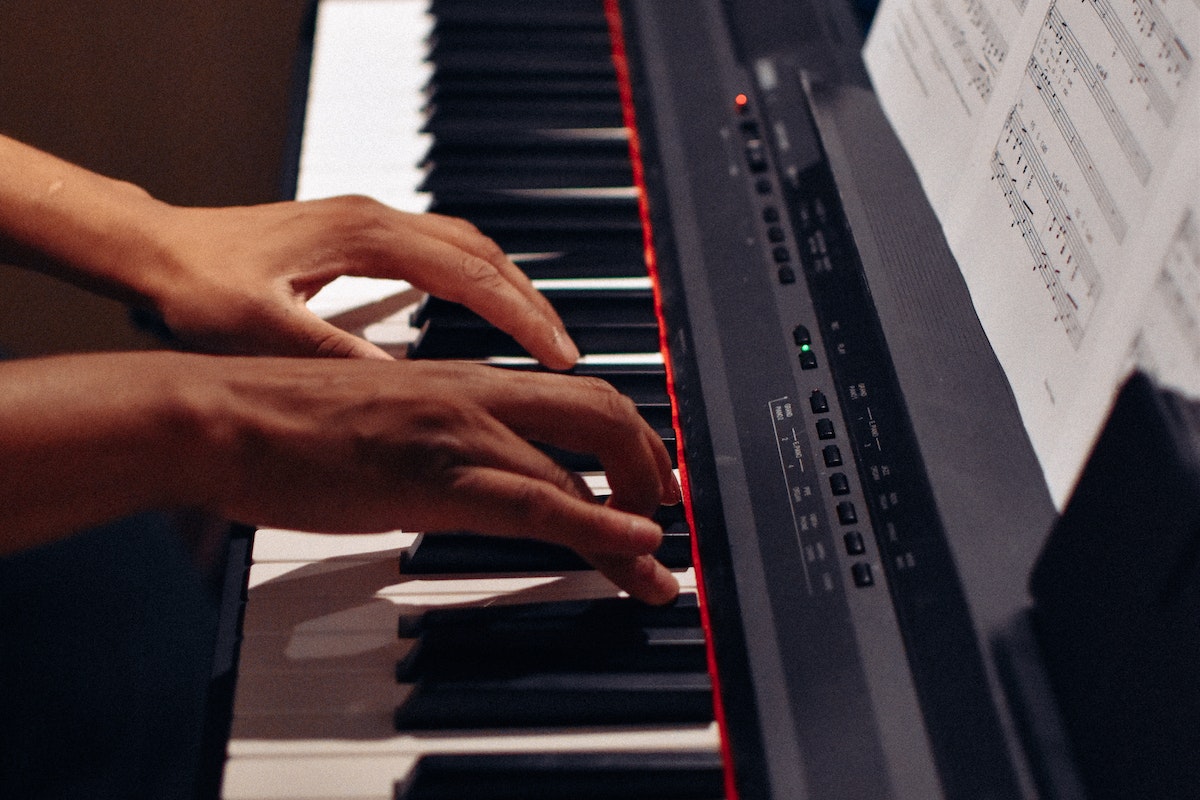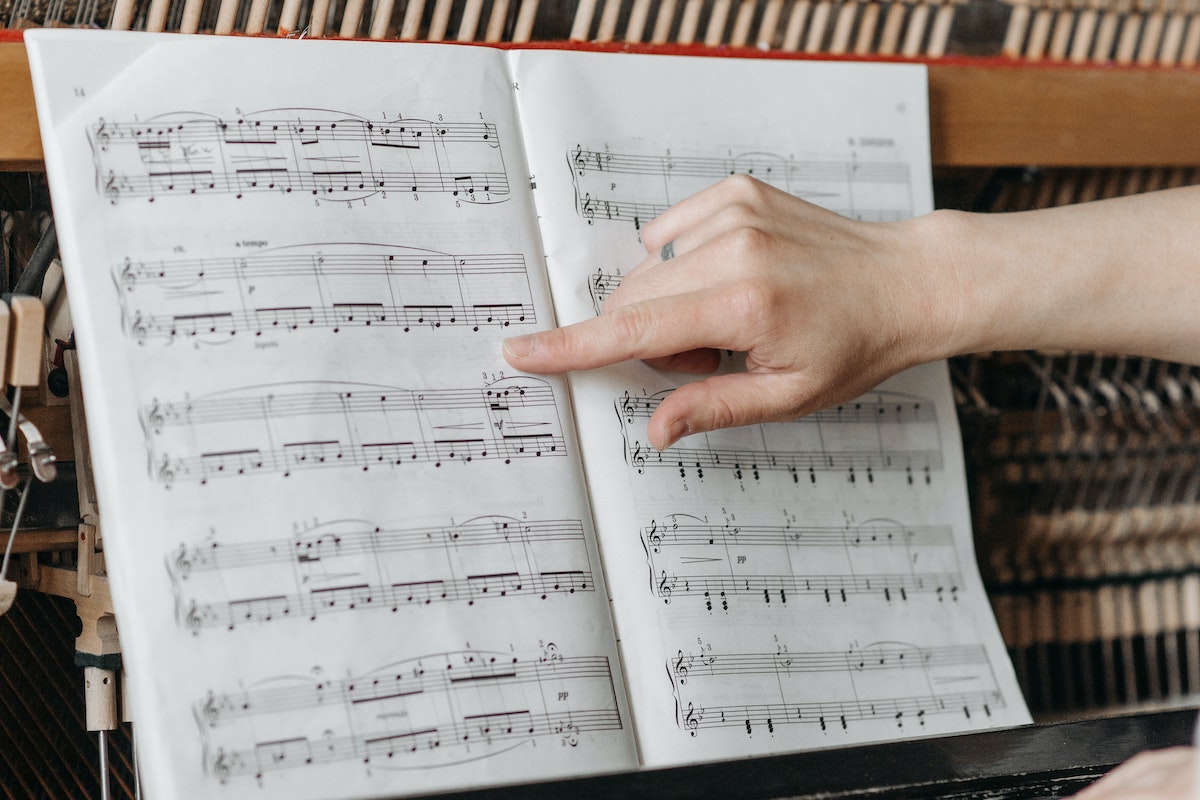Syncopation is that unexpected “pop” in a song that makes your foot tap a little differently. Imagine music as a predictable walk, and then suddenly, you take a surprising hop or skip. That’s syncopation in action—a twist in rhythm that turns the ordinary into something catchy and memorable. Curious about this musical surprise element? Let’s dive deeper into what makes syncopation the spice of many of our favorite tunes.
What does syncopation mean? It refers to the placement of rhythmic stresses or accents on non-important beats, creating a unique and captivating rhythm. It’s that element that adds interest to melodies, making them memorable and groovy.
What is syncopation in music?
Syncopation in music refers to the deliberate placement of rhythmic stresses or accents on non-important beats where they wouldn’t typically occur. It’s all about creating unexpected twists and turns within the rhythm, adding a touch of complexity and flair to the music.

Syncopation is a powerful tool that musicians and composers use to create interest, excitement, and uniqueness in their music. By defying the conventional patterns of strong and weak beats, syncopation brings fresh and captivating energy to melodies. It keeps our ears engaged and our bodies moving. It also ensures we never get bored of the same old predictable rhythms.
AKAI Professional MPK Mini MK3

AKAI Professional MPK Mini MK3
What are examples of syncopation in different genres?
Syncopation is found across various genres, adding flavor and depth to the music we love. Let’s explore a few examples:
- Jazz: Jazz music is synonymous with syncopation. The swinging rhythms, improvised melodies, and intricate syncopated beats define this genre. Artists like Louis Armstrong and Ella Fitzgerald showcased syncopation’s magic in their scat-singing and instrumental solos.
- Blues: The soulful sounds of blues music often incorporate syncopation to evoke emotions and create a distinctive groove. Legendary artists like B.B. King and Muddy Waters masterfully played with syncopated rhythms, giving their music that distinct bluesy feel.
- Hip-Hop: Syncopation is the backbone of hip-hop’s rhythmic flow. From the syncopated beats in the drum patterns to the intricate syncopated rhymes in the lyrics, hip-hop embraces syncopation to create a head-nodding, body-moving experience.
How can you recognize syncopation?
Recognizing syncopation may seem difficult initially, but with some practice, you’ll start picking up on its distinctive patterns. Here are some tips to help you recognize syncopation:

- Listen for unexpected accents: Syncopation often places accents on what are typically considered weaker beats or offbeats. Pay attention to the notes or beats that stand out and give the music its groove.
- Feel the urge to sway: Syncopation has a way of making your body move involuntarily. If you find yourself swaying, tapping your foot, or nodding your head to a rhythm, chances are you’re experiencing syncopation.
- Notice the unexpected gaps: Syncopation can also involve rests or silences in places where you’d expect a sound. These intentional breaks add a rhythmic tension and make the subsequent accented beats more impactful.
Why use syncopation in music?
Syncopation is more than a stylistic choice—it has tangible benefits that enhance the overall musical experience. Here are a few reasons why using syncopation can take your music to the next level:
- Expressive and captivating: Syncopation injects expressiveness into music, allowing artists to convey emotions and create memorable hooks.
- Engaging and intriguing: By deviating from the expected patterns, syncopation keeps listeners engaged and curious about what’s coming next.
- Versatile and adaptable: Syncopation can be used in various genres and styles, making it a versatile tool for musicians to add their unique touch to their compositions.
Syncopation dos and don’ts:
| DOs | DON’Ts |
|---|---|
| Embrace unexpected accents and patterns | Stick to predictable rhythms |
| Experiment with syncopated melodies | Overdo syncopation to the point of chaos |
| Listen to syncopated music for inspiration | Ignore the power of silence and rests |
| Incorporate syncopation tastefully | Be afraid to push musical boundaries |
Can syncopation be found in classical music?
Classical music is known for its intricate compositions, precise notation, and deliberate adherence to established forms and structures. However, that doesn’t mean that syncopation is entirely absent from this genre. While syncopation may not be as prevalent or as emphasized in classical music as in jazz or pop, composers throughout history have incorporated elements of syncopation to create moments of surprise and rhythmic interest.
Here are a few renowned pieces that incorporate syncopation:
- Beethoven’s Symphony No. 7, Movement II: Beethoven, a master of rhythm, expertly weaves syncopated passages throughout his compositions. In the second movement of his Symphony No. 7, he employs syncopation to create a sense of tension and excitement.
- Stravinsky’s “Rite of Spring” – This groundbreaking ballet score by Igor Stravinsky features powerful and complex rhythms, many of which incorporate syncopation. “The Rite of Spring” pushes the boundaries of rhythm and showcases Stravinsky’s mastery of rhythmic experimentation.
- Debussy’s “Golliwog’s Cakewalk”: Claude Debussy’s piano piece “Golliwog’s Cakewalk,” from his suite “Children’s Corner,” infuses syncopation to evoke a playful and lively character. It demonstrates how syncopation can add a touch of whimsy even in the world of classical music.
If you want even more great tips and information, check out the video on syncopation in music production.
Frequently Asked Questions (FAQ)
Alright, folks, I’m guessing you still have a few questions brewing. Here, I’ve compiled some of the most frequently asked questions about syncopation.
Can syncopation be used in any genre of music?
Absolutely! While syncopation may be more commonly associated with certain genres like jazz or hip-hop, it can be used in any genre of music to add interest, complexity, and a unique rhythmic feel.
Is syncopation the same as a polyrhythm?
No, syncopation and polyrhythm are distinct concepts. Syncopation refers to the placement of accents on weaker beats, while polyrhythm involves the simultaneous use of two or more conflicting rhythms. However, syncopation can contribute to the creation of polyrhythms in music.
How can I improve my ability to recognize syncopation in music?
Developing an ear for syncopation takes practice. Start by actively listening to music from different genres and paying attention to moments where the rhythm deviates from the expected strong beats. Regular exposure to syncopated rhythms will gradually train your musical ear.
Conclusion
And that’s a wrap on our exploration of syncopation in music. We’ve dived into the meaning of syncopation, explored its presence in various genres, and even touched on its role in classical music. It’s been an exciting journey, hasn’t it?
Did I cover everything you wanted to know? Let me know in the comments section below. I read and reply to every comment. If you found this article helpful, share it with a friend, and check out my full blog for more tips and tricks on syncopation and music production. Thanks for reading and keep grooving!
Key Takeaways
This article covered the topic of syncopation in music. Here are some key takeaways:
- Syncopation refers to placing accents on weaker beats in music, adding interest and complexity.
- Syncopation can be found in various genres, including jazz, blues, hip-hop, and even classical music.
- Recognizing syncopation takes practice, but actively listening to different genres of music can help train your ear.
- Syncopation adds expressiveness, engagement, and a unique character to compositions.
- Incorporating syncopation requires balance and careful execution to maintain coherence and accessibility in music.















